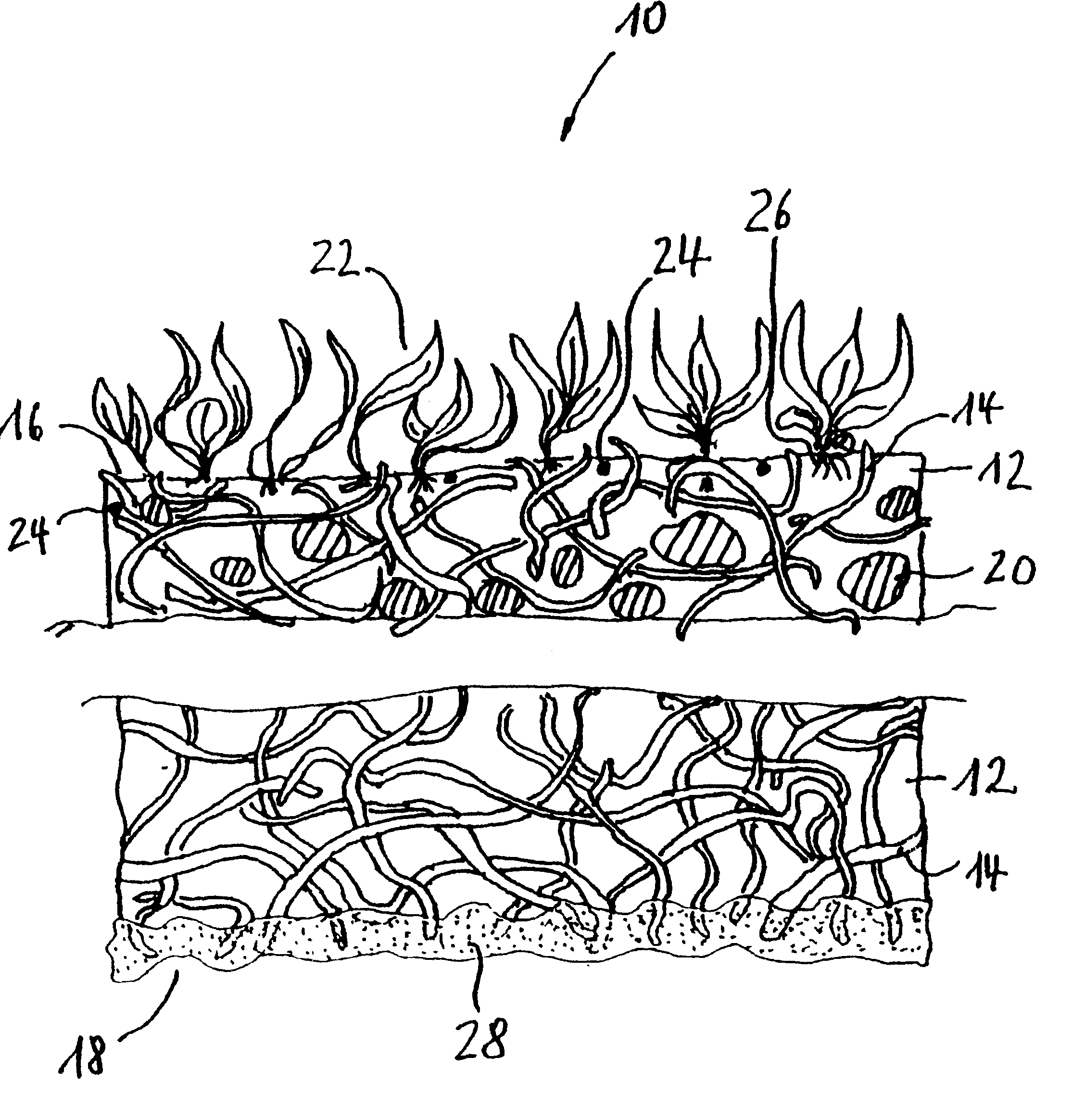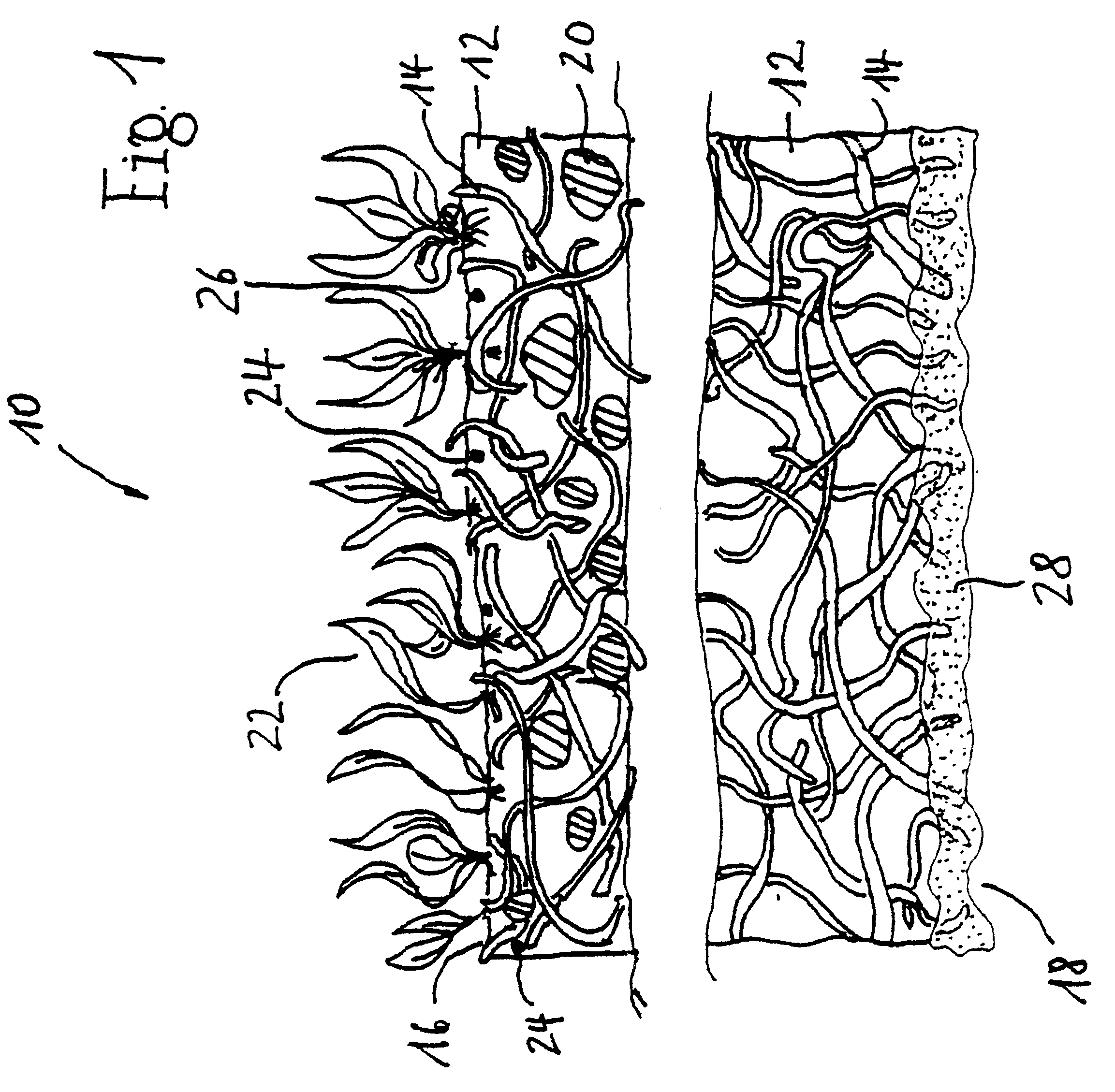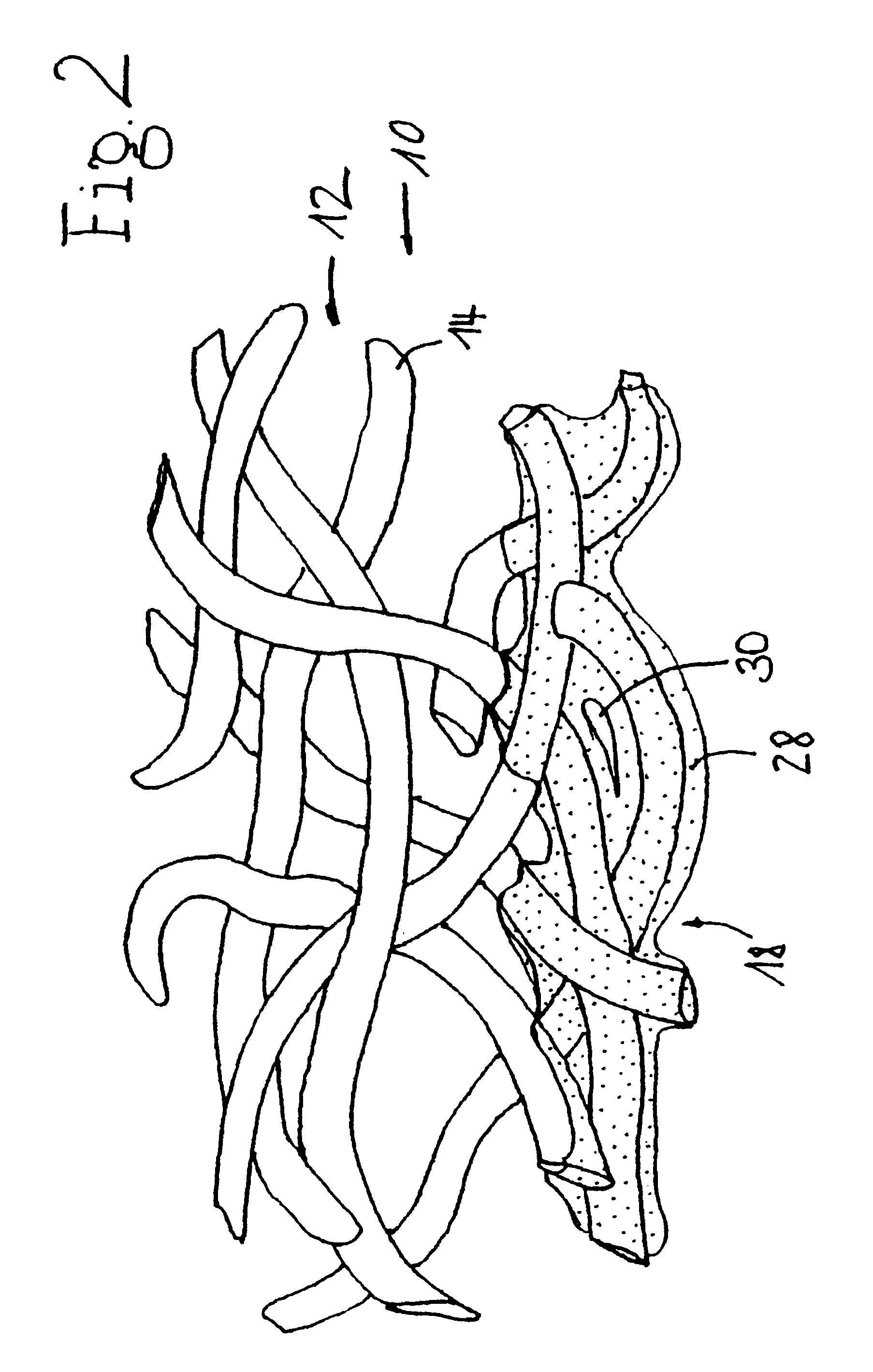Vegetation support consisting of a mat of entangled organic fibers
a technology of organic fibers and vegetation supports, applied in the field of vegetation supports consisting of organic fibers, can solve the problems of affecting the growth of plants, and affecting the growth of plants, and achieve the effect of avoiding environmental threats
- Summary
- Abstract
- Description
- Claims
- Application Information
AI Technical Summary
Benefits of technology
Problems solved by technology
Method used
Image
Examples
Embodiment Construction
Further advantages and embodiments of the present invention will be explained with the assistance of the diagrams, the patent claims and the following specification. In the diagrams:
FIG. 1 shows a cross-section through a segment of a vegetation support according to the present invention,
FIG. 2 shows a partial side view of an embodiment of the vegetation support according to the present invention on an enlarged scale, and
FIG. 3 shows a view similar to that of FIG. 2 of another embodiment of the vegetation support according to the present invention.
FIG. 1 illustrates a side view of a segment of a first embodiment of vegetation support 10 according to the present invention. This essentially comprises a mat 12 made of interleaved disordered organic fibres 14 which in the embodiments illustrated here are coconut fibres. Mat 12 comprises an upper side 16 and an underside 18. Substrate particles 20, serving as a nutrient basis for plants 22, and plants 22 themselves are fed into mat 12. Pl...
PUM
 Login to View More
Login to View More Abstract
Description
Claims
Application Information
 Login to View More
Login to View More - R&D
- Intellectual Property
- Life Sciences
- Materials
- Tech Scout
- Unparalleled Data Quality
- Higher Quality Content
- 60% Fewer Hallucinations
Browse by: Latest US Patents, China's latest patents, Technical Efficacy Thesaurus, Application Domain, Technology Topic, Popular Technical Reports.
© 2025 PatSnap. All rights reserved.Legal|Privacy policy|Modern Slavery Act Transparency Statement|Sitemap|About US| Contact US: help@patsnap.com



